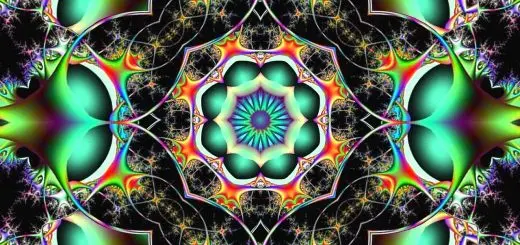Mystic Symbols and Their Meanings: Exploring Mysticism

Looking for more amazing products? Check out our online store and explore our collection here! Happy shopping!
Before diving in, please note: This post is for informational purposes only. If you’d like to know more about how we approach topics, feel free to check out our friendly Disclaimer Page.
Hey there, amazing readers! 
We’re committed to delivering quality posts, and your support (even just sticking around despite the ads) means everything to us. So, bear with us, and thanks for helping us keep the good vibes rolling. Now, on to the fun stuff!
TRANSLATE BUTTON AT THE END OF THE ARTICLE
Introduction to Mystic Symbols
Mystic symbols have captivated human imagination for centuries, offering a glimpse into the spiritual and mystical realms.
These symbols hold significant meanings and are often used to convey complex ideas in a concise visual form.
From ancient civilizations to modern spiritual practices, mystic symbols have played a crucial role in shaping beliefs and guiding individuals on their spiritual journeys.
In this article, we will delve into the world of mysticism, exploring the meaning behind these enigmatic symbols and their importance in various cultures and traditions.
Understanding Mysticism
Mysticism is a spiritual practice that involves the pursuit of communion with a divine or transcendent reality.
It often entails experiences of unity with the universe, spiritual enlightenment, and a deep connection to the sacred.
Mystic symbols are tools used in mysticism to represent abstract concepts, facilitate spiritual growth, and evoke powerful emotions.
Mystics believe that these symbols have the power to unlock hidden truths and transcend the limitations of the material world, leading to profound spiritual insights and transformative experiences.
Importance of Symbols in Mysticism
Symbols play a crucial role in mysticism by transcending language barriers and communicating universal truths that resonate with people across different cultures and beliefs.
They serve as bridges between the mundane and the divine, guiding individuals on their spiritual journeys and providing a framework for understanding the mysteries of existence.
Mystic symbols are often imbued with layers of meaning, inviting contemplation and reflection on the deeper aspects of life and consciousness.
By engaging with these symbols, practitioners of mysticism can tap into the collective wisdom of humanity and connect with the spiritual forces that underpin the universe.
Common Mystic Symbols
There are numerous mystic symbols found across various cultures and traditions, each with its own unique meanings and significance.
Some common mystic symbols include:
The Ankh: an ancient Egyptian symbol representing life, immortality, and regeneration.
The Om: a sacred sound and spiritual icon in Hinduism, symbolizing the essence of the universe.
The Pentagram: a five-pointed star often associated with magical practices and esoteric traditions.
The Eye of Horus: an ancient Egyptian symbol of protection, royal power, and good health.
The Tree of Life: a mystical symbol found in many religious and spiritual traditions, representing interconnectedness and the cycle of life and death.
These symbols serve as potent reminders of the transcendent nature of reality and the interconnectedness of all beings in the universe.
The Meaning Behind Mystic Symbols
Mystic symbols are rich in symbolism and meaning, often drawing on archetypal imagery and ancient wisdom.
Each symbol carries layers of significance that can be interpreted in multiple ways, depending on the context and individual beliefs.
For example, the lotus flower is a common symbol in Eastern mysticism, representing purity, enlightenment, and spiritual rebirth.
Similarly, the yin-yang symbol in Taoism symbolizes the interconnectedness of opposites and the balance of forces in the universe.
Exploring Mystical Symbolism
Mystical symbolism involves delving deep into the hidden meanings and esoteric significance of symbols to unlock their transformative power.
By studying the origins, cultural contexts, and historical interpretations of mystic symbols, practitioners can gain a deeper understanding of their spiritual significance and apply them in their own mystical practices.
Exploring mystical symbolism is a journey of self-discovery and spiritual growth, leading to profound insights and connections with the divine.
Cultural Variations in Mystic Symbols
Mystic symbols are not limited to a single culture or tradition but are found in various forms across different societies and belief systems.
While some symbols may have universal meanings, others are unique to specific cultures and carry distinct significance within those contexts.
For example, the Celtic triskele symbolizes the interconnectedness of earth, sea, and sky in Celtic spirituality, while the mandala is a sacred symbol in Hinduism and Buddhism representing the universe’s wholeness and harmony.
Explore the Path to Spirituality and Enlightenment – Start Here.
Historical Significance of Mystic Symbols
The history of mystic symbols is intertwined with the evolution of human consciousness and spiritual beliefs.
From ancient civilizations to modern esoteric traditions, mystic symbols have played a vital role in shaping religious practices, philosophical thought, and mystical experiences.
By studying the historical significance of these symbols, we can gain insights into the spiritual insights and cultural values of the past and understand how they continue to influence our beliefs and practices today.
Interpreting Mystical Symbols
Interpreting mystical symbols requires a nuanced understanding of their cultural, historical, and spiritual contexts.
It involves delving deep into the symbolic language of mysticism and uncovering the hidden meanings and esoteric wisdom encoded within these symbols.
By approaching mystic symbols with an open mind and a willingness to explore their multifaceted meanings, practitioners can unlock the secrets of the universe and gain a deeper understanding of their spiritual path.
Utilizing Mystic Symbols in Practice
Practitioners of mysticism often use mystic symbols as tools for meditation, contemplation, and ritual practice.
By incorporating these symbols into their spiritual routines, individuals can deepen their connection to the divine, access higher states of consciousness, and cultivate inner peace and spiritual growth.
Whether through visualizations, mantras, or sacred art, mystic symbols can serve as gateways to the transcendent realms and facilitate profound spiritual experiences.
Modern Applications of Mystic Symbols
In the modern world, mystic symbols continue to hold relevance for individuals seeking spiritual guidance, personal growth, and mystical experiences.
From New Age practices to contemporary art and design, mystic symbols are ubiquitous in popular culture and serve as powerful reminders of our spiritual nature and interconnectedness with the cosmos.
By embracing mystic symbols in our daily lives, we can tap into their transformative power and align ourselves with the deeper currents of the universe.
Conclusion: Embracing Mysticism through Symbols
In conclusion, mystic symbols offer a window into the mystical realms of consciousness, spirituality, and divine wisdom.
By exploring the meanings and significance of these symbols, we can deepen our understanding of the universe and our place within it.
Whether through meditation, ritual practice, or creative expression, mystic symbols have the power to inspire awe, evoke wonder, and catalyze profound spiritual experiences.
Embracing mysticism through symbols is a journey of self-discovery and spiritual growth, leading to greater harmony, peace, and enlightenment in our lives.
Let us continue to explore the rich tapestry of mystic symbols and unlock the secrets they hold for our souls.

The Enlightenment Journey is a remarkable collection of writings authored by a distinguished group of experts in the fields of spirituality, new age, and esoteric knowledge.
This anthology features a diverse assembly of well-experienced authors who bring their profound insights and credible perspectives to the forefront.
Each contributor possesses a wealth of knowledge and wisdom, making them authorities in their respective domains.
Together, they offer readers a transformative journey into the realms of spiritual growth, self-discovery, and esoteric enlightenment.
The Enlightenment Journey is a testament to the collective expertise of these luminaries, providing readers with a rich tapestry of ideas and information to illuminate their spiritual path.
Our Diverse Expertise
While our primary focus is on spirituality and esotericism, we are equally passionate about exploring a wide range of other topics and niches 

To ensure we provide the most accurate and valuable insights, we collaborate with trusted experts in their respective domains 
Our blog originally focused on spirituality and metaphysics, but we’ve since expanded to cover a wide range of niches. Don’t worry—we continue to publish a lot of articles on spirituality! Frequently visit our blog to explore our diverse content and stay tuned for more insightful reads.
Hey there, amazing reader! 
Check out our store here and take a peek at some of our featured products below! Thanks for being awesome!













